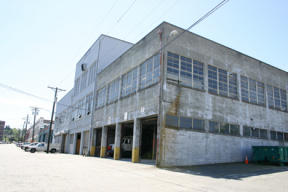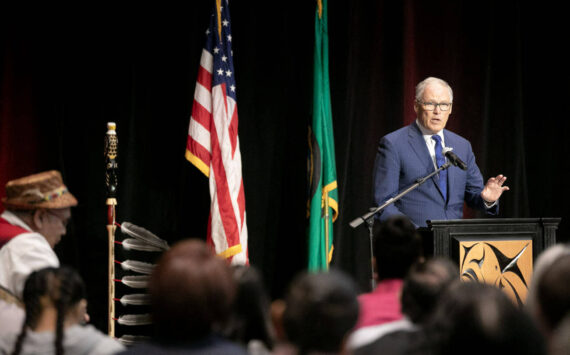When Seattle-based consultant Maestri Design was hired by the City of Tacoma in 2003 to make recommendations for improving downtowns retail climate, the list of suggestions was long: consolidate downtown retailers; identify distinct shopping districts; loosen regulations for retailers; improve signage to help shoppers navigate the area; develop a parking program; help downtown entrepreneurs; and adopt an aggressive and confident marketing stance.
According to Maestri Design president Paula Rees, downtown could accommodate as much as 225,000 square feet of additional retail activity to meet current demand — and much of that demand was in the area of fresh fruit and groceries. Simply put, people currently living downtown (and, perhaps as important, people projected to live downtown) didnt have a nearby grocery store.
Its an aspect that concerns Tacomas Economic Development Department (TEDD) — specifically in relation to the departments goal of creating 2,010 downtown residential units by the year 2010.
Theres an unmet demand for a downtown grocery store, based upon that study, said TEDD assistant director Martha Anderson during the Economic Development Committee meeting on Tuesday.
Still, specialty and chain grocery stores are concerned about levels of income and population downtown (according to the 2000 census, only 6,477 residents live downtown). That said, Tuesdays meeting explored the viability and potential demand for a year-round public market in downtown Tacoma.
Cities are using public markets as downtown retail anchors, said Scott Surdyke, a partner with The Scott Group, a Seattle-based consulting firm hired last fall to explore the idea of creating a permanent public market downtown. As downtown Tacoma looks toward its next stage of growth, now is the time to explore the possibility of such an amenity.
According to Surdyke, Tacoma could support a 9,500-square-foot public market that housed 25 vendors and grossed $4.5 million annually. Additionally, the market could attract people from throughout Pierce County (which has a population of 773,000) and the South Sound region, thus drawing shoppers to the citys downtown core. Indeed, Surdyke reported that public markets — such as Pike Place in Seattle and Granville Island in Vancouver, B.C. — are destination markets that draw people from distances further away. Whereas a typical grocery store serves shoppers within a one- to three-mile radius, a public market could capture shoppers from at least 10 miles away, according to the groups market analysis.
Based on their findings, The Scott Group outlined several recommendations for an urban public market.
First, markets situated near the water typically draw more customers. Having a market on the water creates an important connection between the seafood being sold at the market and the waterside locale, according to Surdyke.
Second, most markets fare better when merchants are responsible solely for the cost of operating their businesses — not the land on which the market is housed. Most merchants cant carry land purchase fees, said Surdyke. Public markets often require a creative subsidy or land grant up front. Case in point: Puyallup Public Market. According to Scott Mackay, also a partner with The Scott Group, the market is owned and financed by the city, which will carry a debt burden for approximately five years before it is profitable. Merchants, however, are already operating at a profit.
Third, a public market should be located in an area where there is room to expand and grow into a market district.
Finally, the market should be easily accessible from nearby Interstate-5 and Interstate-705, and offer visible, nearby parking.
To that end, the Scott Group recommended four sites for a public market in Tacoma:
1. Streets & Grounds (Brewery / Dome District) — This site is located near the Brewery and Dome Districts on three city-owned parcels at South 23rd and Holgate. The site once housed a maintenance shop, and includes a two-story concrete warehouse that could serve as the main market hall. The configuration of these multiple warehouse structures would give the market an historic feel and potential for a sprawling district similar to the Pike Place Market, said Surdyke.
2. Freighthouse Square / Pierce Transit Plaza (Dome District) — The 380-foot portion of Freighthouse Square located west of the Sounder lobby could be renovated into a public market hall; the Transit Plaza would house the seasonal Farmers Market; and additional market and mixed-uses could be developed in the adjacent Pierce Transit Shed. The site is also located near a major transit center, as well as I-5 and I-705.
3. Petrich / Bamford Site (Foss Waterway East) — This site is most similar to the Granville Island model because it is situated on two waterfront parcels that flank the east side of the Murray Morgan Bridge. Existing structures on the site could serve as market halls. However, the properties are currently owned by Port of Tacoma Commissioner Claire Petrich and Kathryn Bamford, and is presently being considered for the Urban Waters project.
4. Colonial Produce / Johnnys Seafood (Foss Waterway West) — Also located on the waterfront, these two sites could anchor a mixed-use development that would provide a major new attraction and amenity for the south end of the Foss Waterway, according to The Scott Group.
Tacoma has a history of downtown public markets. In 1891, the C Street Market served fresh fruit and produce from a 6,000 square foot wood structure. In 1927, the Crystal Palace Market housed 189 vendors in a 60,000 square foot area downtown. And the Tacoma Farmers Market, which opened its 15th season last week, operates from May to October on Broadway, between 11th and 9th Streets, and near Freighthouse Square.
Councilmember Kevin Phelps inquired about the importance of putting a public market on the waterfront, and whether such a venture was truly water-dependent. Is that a good use of waterfront property? he asked. Does it fit the zoning issues?
Surdyke said the same could be asked of housing and commercial development projects presently slated for the waterfront. He also reiterated, based upon the analysis collected, that a connection to the water was important for public markets to succeed.
The Scott Group recommended that the city encourage non-profit groups, businesses, developers, and civic organizations to chair a Public Market Task Force to gauge public and political support for development of a market, obtain funding, and create an organization to manage the market.
TEDD director Ryan Petty said he was interested in testing the market and gauging the level of partnership interests in the project.








